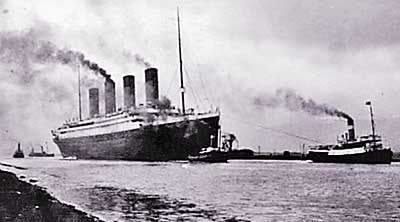THE GREAT OCEAN LINERS
Ocean liners were, until the 1960s, the only way most people could cross the Atlantic. The first ocean liners were sailboats. However, crossing the Atlantic in a sailboat was a risky business and most people avoided travel unless they absolutely had to.
The introduction of steamships made transatlantic travel much safer. The first paddle steamer to cross the Atlantic Ocean was Susannah in 1819 who did so in 27 days. The first British steamship to cross the Atlantic was Sirius, made in Glasgow. She made the crossing in 18 days carrying 40 passengers. Initially the main function of transatlantic steamships was to carry mail but, as people recognised the improved safety, speed and reliability of steamships, passengers became interested in ships and sea travel.

During the Edwardian era shipyards round the world became locked in a furious battle over who could build the biggest ships, the most luxurious, the fastest. Liners, as they became known after the shipping lines they served, were not only a means of transportation but also symbols for their nations’ status, wealth and command of the sea. No expense was spared. First class passengers travelled in luxurious settings which emulated the interiors of great country houses. They epitomised all the optimism and opulence of the years proceeding World War I.
There is more information about ocean liners on the website that supported an exhibition hosted earlier in 2005 at the Merseyside Maritime Museum – New York: The only way to cross.

